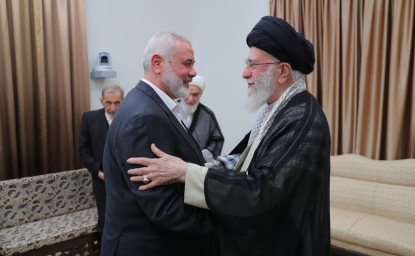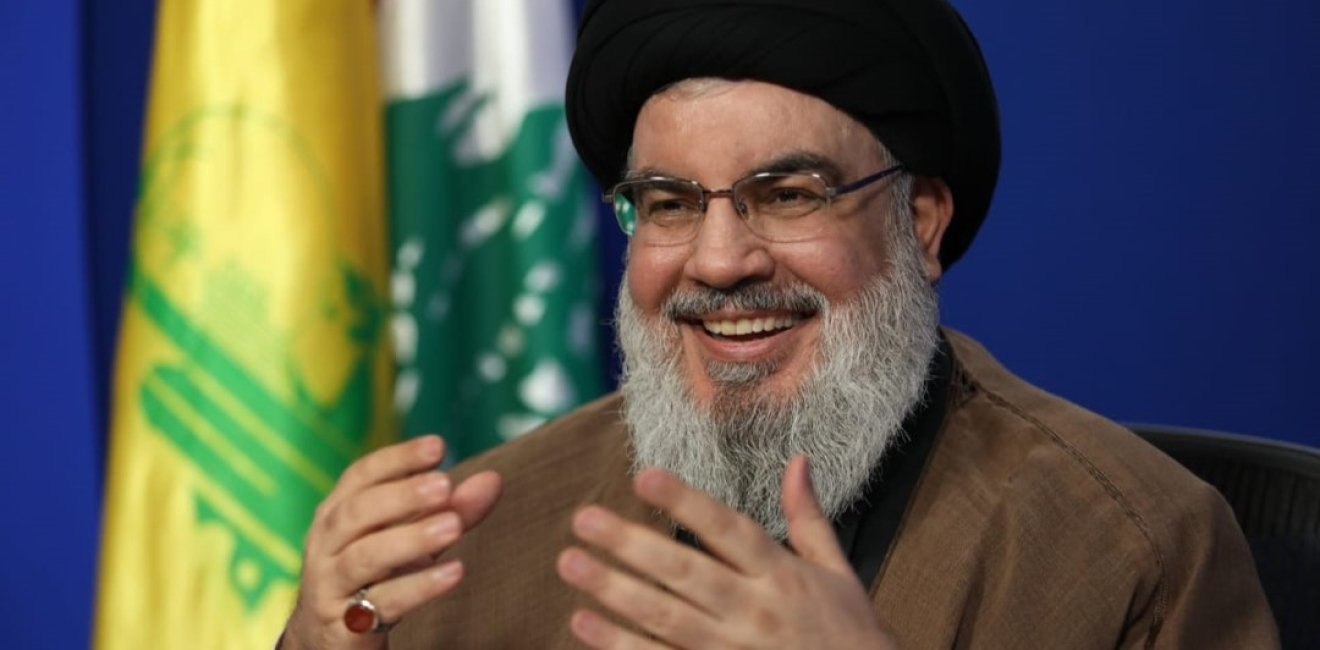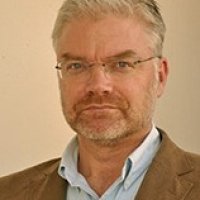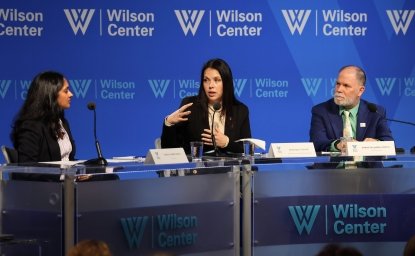Lebanon’s main Islamist party has undergone a profound transformation over the past four decades. Once associated with suicide bombings and hostage-taking, Hezbollah has steadily evolved from an underground movement in 1982 to the dominant political player in Lebanon in 2022. Yet even though Hezbollah is strong militarily and politically, it also faces greater challenges than ever before. They range from the party’s massive expansion since 2006 to the domestic discontent over its refusal to abandon its weapons and the growing disenchantment within its Shiite base.
Hezbollah’s role in the region has been particularly controversial. The most powerful regional militia, Hezbollah used its vast arsenal to fight Israel for thirty-four days in 2006. The conflict was Israel’s longest Middle East war and left no clear winner, although Hezbollah chief Sheikh Hassan Nasrallah emerged afterwards at the top of popularity polls across the region. But its armed intervention in Syria, beginning in 2012, on behalf of President Bashar al-Assad deeply tarnished its image among Sunnis across the region as a champion of anti-Israel resistance. After 2006, the party’s expansion in manpower, military capabilities and funding also loosened internal control and made it more susceptible to corruption and penetration by Israel.
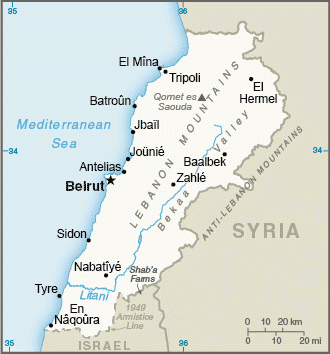
The movement, created under Iran’s auspices and aid after Israel’s 1982 invasion, reflects the dynamic Shiite dimension of Islamist politics in the Arab world. Hezbollah was inspired by the teachings of Iranian revolutionary leader Ayatollah Ruhollah Khomeini. It subscribes to a doctrine known as the velayat-e faqih—or, in Arabic, the wali al-faqih—Khomeini’s theory of Islamic governance, which bestows guardianship of government on a senior religious scholar. Iran remains Hezbollah’s chief ideological, financial, and military supporter. Syria is also a close ally.
Hezbollah’s core ideological goals are resisting Israel, establishing an Islamic state in Lebanon, and offering obedience to Iran’s supreme leader. But Hezbollah has developed a keen sense of realpolitik that helped shape its political agenda and allowed it to sidestep challenges to its armed status. It long ago accepted, for example, that an Islamic state is not appropriate for Lebanon, and it has considered alternative systems of government, while not relinquishing its ideological preference for an Islamic state.
Hezbollah has deepened its involvement in Lebanese politics over the years, but it did so largely in response to potential threats to its armed status, what it calls its “resistance priority”. Ideally, the party would prefer to avoid the pitfalls of Lebanon’s political quagmire, believing that it complicates the more pressing goal of confronting Israel.
“We have never sought to be in government ministries,” Nasrallah said after the collapse of then government of Prime Minister Saad Hariri in 2011. “All we have been saying to successive governments—and we still say it today—is the following: Brothers, we are a resistance movement.… We do not seek to run the government. Our hearts and minds are elsewhere. When people go to sleep, we conduct [military] training and prepare ourselves.”
Over four decades, Hezbollah’s deepening political engagement also transformed the movement into the main representative of Lebanon’s Shiites, the largest of the country’s seventeen recognized sects. In turn, the movement now needs continued support of the community to ensure its own survival. Yet the interests of its constituents do not always correspond to the agenda of Iran’s leaders, to whom Hezbollah is ideologically beholden. Balancing these rival obligations is a paradox that Hezbollah is finding ever more difficult to reconcile.
The Beginning
Hezbollah emerged in the wake of Israel’s 1982 invasion of Lebanon, but its genesis lay in the Shiite religious seminaries of Najaf in southern Iraq. In the 1960s and 1970s, Lebanese clerical students were influenced by leading Shiite ideologues such as Mohammed Baqr al Sadr and Ruhollah Khomeini. Sadr, a founder of the Party of the Islamic Call, or Hizb al Dawa al Islamiyya, promoted Islamic values as a counterweight to secularism and the leftist ideologies then attracting Arab youth. Khomeini achieved prominence with his doctrine of velayat-e faqih.
Lebanese students and teachers in Iraqi seminaries were forced to return home after President Saddam Hussein cracked down on the Shiite clerics in the late 1970s. Some then began to preach the ideas of Khomeini and Sadr to a domestic audience. By the end of the 1970s, three developments helped create fertile ground for the eventual emergence of Hezbollah. One factor was the creation of Amal, the first strong Shiite movement. Amal’s founder was Musa Sadr, a charismatic Iranian-born cleric who tapped into rising anger among Shiites over their repression by other Lebanese sects, particularly Christians and Sunni Muslims. But in 1978, Sadr vanished during a trip to Libya. After his disappearance, Amal drifted in a more secular direction under new leadership, to the dismay of the movement’s Islamists.

The second event was Israel’s first invasion of Lebanon in 1978 in a bid to expel the Palestine Liberation Organization (PLO) from south Lebanon. Israel installed a security cordon along the border inside Lebanon, which was controlled by an Israeli-backed militia. It was the first time many southern Lebanese lived under occupation.
The third crucial event was the Iranian Revolution in 1979, when the first modern theocracy replaced the dynastic rule that had prevailed in Iran for more than 2,500 years. The revolution had an electrifying effect on Lebanese Shiites in general and on the clerical followers of Khomeini in particular. Iranian leaders and Lebanese clerics held lengthy discussions about importing the revolution to Lebanon and building an armed anti-Israel movement. Among the Lebanese clerics were Sheikh Sobhi Tufayli, who later became Hezbollah’s first secretary-general, and Abbas Musawi, a preacher from the Bekaa Valley village of Nabi Sheet. The idea was delayed by an Iranian power struggle and the beginning of the eight-year war between Iran and Iraq in 1980.
Then Israel invaded Lebanon in June 1982to drive the PLO out of Lebanon. Iran immediately offered assistance, dispatching 5,000 Revolutionary Guards to Syria for deployment in Lebanon. But the main fighting soon ended, and most of the Iranians returned home. With Syrian approval, a smaller contingent of Iranians moved into the northern Bekaa Valley to begin mobilizing and recruiting Shiites into a new anti-Israel force that was the basis of what became Hezbollah.
By 1983, the nascent Hezbollah’s influence was seeping from the Bekaa Valley into Beirut’s Shiite suburbs and from there further south toward the front line of the Israeli occupation. By 1985, Israel, exhausted by the intensifying resistance campaign, withdrew to a security belt along the Lebanon-Israel border. Hezbollah—along with Amal and secular local resistance groups, which played smaller roles—had more success in pressuring Israel in two years than had the PLO in a decade. Hezbollah won additional support by providing social welfare services to the Shiite community.
In 1985, Hezbollah formally declared its existence in its “Open Letter,” a manifesto outlining its identity and agenda. The goals included driving Israeli forces from south Lebanon as a precursor to the destruction of the Jewish state and the liberation of Jerusalem. Hezbollah confirmed that it abided by the orders of “a single wise and just command” represented by Ayatollah Khomeini, the “rightly guided imam.”
Hezbollah also rejected Lebanon’s sectarian political system and instead advocated creation of an Islamic state. At the same time, the party was careful to emphasize that it did not wish to impose Islam as a religion on anyone and that other Lebanese should be free to pick their preferred system of governance.
In formally declaring its existence and goals, Hezbollah emerged from the shadows and demonstrated that it was not a fleeting aberration of the civil war but a force determined to endure.
First Phase: Underground
Hezbollah’s evolution falls into six distinct phases. The first was from 1982 to 1990 and coincided with the chaotic 1975–90 civil war, during which the Lebanese state had little control. Lebanon was instead carved into competing fiefdoms dominated by militias and occupying armies. These were Hezbollah’s wild days, when it could do as it pleased under Iran’s guidance and Syria’s guarded tolerance.
The movement became synonymous with extremist attacks, including two on U.S. embassies in 1983 and 1984. Its deadliest attacks were the simultaneous truck bombings of the U.S. Marine barracks and the nearby French Paratroop headquarters, which killed 241 American servicemen and sixty-eight French soldiers. From 1984, more than 100 foreigners in Lebanon were kidnapped. Hezbollah denied responsibility, although some of its members were later linked with the attacks.
After 1986, Hezbollah began to dominate the resistance against Israel’s occupation in south Lebanon. But the party’s growing influence in the south also brought it into conflict with the rival Amal movement. In 1988, the two factions fought the first in a series of bloody internecine battles that over the next two years resulted in thousands of dead and generated an animosity that continued to linger more than three decades later.
Second Phase: Running for Parliament
The second phase was from 1991 to 2000, following the end of Lebanon’s civil war in 1990. The restoration of state control sparked a debate within Hezbollah over its future course of action. Hardliners, represented by Sheikh Tufayli, argued that Hezbollah should not compromise its ideological agenda regardless of the nation’s changed circumstances. Others countered that Hezbollah had to adapt to the new situation to protect its “resistance priority”—the right to confront Israel’s continued occupation of the south.
The debate played out over whether Hezbollah should run in the 1992 parliamentary election, the first in twenty years. Joining parliament would strengthen Hezbollah’s standing in Lebanon, but it would also flout its 1985 manifesto that rejected a sectarian political system. Pragmatists won after receiving the blessing of Ayatollah Ali Khamenei, Iran’s supreme leader, to participate in the elections. Hezbollah won eight parliamentary seats.
Hezbollah also went through a leadership change. A few months before the 1992 election, Hezbollah secretary-general Sayyed Abbas Musawi was assassinated in an Israeli helicopter ambush. He was replaced by his protégé, Sayyed Hassan Nasrallah, a 32-year-old cleric.
Under Nasrallah, Hezbollah reorganized, adding new bodies to handle its military, political, and social work. It expanded its social welfare activities nationwide to sustain its popular support within the Shiite community. It also launched a television station, Al-Manar, as the flagship of its propaganda arm, and opened a media relations office. Hezbollah even began a dialogue with other factions and religious representatives, including Christians.
Hezbollah’s newfound pragmatism did not represent an ideological softening or a decision to exchange Islamic militancy for a share of Lebanon’s political space. Hezbollah was instead adapting to postwar circumstances to safeguard the resistance. Shortly after the 1992 election, Nasrallah explained, “Our participation in the elections and entry into [parliament] do not alter the fact that we are a resistance party.”
Hezbollah’s resistance efforts intensified after 1992. Other militias were disbanded under Syrian fiat, but Hezbollah was permitted to keep its armed status as resistance against the Israeli occupation. Its hit-and-run guerrilla tactics claimed ever-higher Israeli casualties during the decade. In 1993 and 1996, Israel responded with air and artillery blitzes against Lebanon in failed attempts to dent Hezbollah’s campaign.
The late 1990s were, in retrospect, Hezbollah’s “golden years.” Hezbollah’s military exploits won it admirers across the Arab and Islamic worlds and earned the respect of all Lebanese, even those inclined to view the Shiite party with suspicion. Under growing pressure from Hezbollah, Israel finally ended its occupation in May 2000, the first time that the Jewish state had ceded occupied territory through force of Arab arms.
Third Phase: Confrontation
The third phase was from 2000 to 2005. With Israel’s withdrawal, Hezbollah’s reputation had never been higher. But its victory risked being Pyrrhic. A growing number of Lebanese began questioning why Hezbollah needed to keep its arms after Israel pulled out of Lebanon. Hezbollah countered by citing minor territorial disputes along the border and a number of Lebanese still detained in Israeli prisons. It claimed its weapons were a vital part of Lebanon’s defense—in case the Israelis returned. Many Lebanese accused Hezbollah of serving an Iranian—rather than a Lebanese—agenda. But Hezbollah still enjoyed the political cover afforded by Syria, which continued to endorse the party’s armed status. Beginning in September 2000, Hezbollah mounted a small-scale campaign against Israeli troops occupying Shebaa Farms, a mountainside area along Lebanon’s south-east border. Shebaa Farms was claimed by Lebanon, but recognized as Syrian territory by the United Nations and occupied by Israel since 1967. The sporadic campaign of mortar and rocket attacks every two or three months helped sustain resistance against Israel.
In February 2005, Rafik Hariri, a former prime minister of Lebanon, was assassinated in a truck bomb explosion. Many Lebanese blamed Damascus; more than a million people--one quarter of the population--turned out in protests against Syria. Syria pulled its troops out of Lebanon in April, two months after Hariri’s murder, ending three decades of military occupation.
The sudden loss of Syrian cover compelled Hezbollah to step deeper into Lebanese politics to defend its “resistance priority.” It allied with Amal, its longtime predominantly Shiite rival, for the June 2005 parliamentary elections. After the election, Hezbollah joined the cabinet for the first time to defend its interests. In early 2006, Hezbollah signed a memorandum of understanding with the Free Patriotic Movement, then the main representative of the Christian community led by retired General Michel Aoun.
Yet Hezbollah’s political participation did not defuse the core military issue. Hezbollah rejected demands, by the United Nations as well as rival parties, to disarm. Lebanese politics grew increasingly rancorous over Hezbollah’s arms. It became the single most divisive national issue.
Fourth Phase: War and Rebuilding
The fourth phase ran from 2006 to 2012. It featured Hezbollah’s biggest military gamble. On July 12, 2006, its militia abducted two Israeli soldiers along the border to bargain for release of Lebanese detainees in Israel. The audacious kidnapping triggered a month-long war with Israel, which sought to disarm Hezbollah and demilitarize the borders. The war ended in a military stalemate—and at a high cost. More than 1,100 Lebanese died; damage was in the billions of dollars. Hezbollah nevertheless declared a “divine victory” simply for preventing an Israeli victory in its longest war since 1948.
Facing intense political criticism for the deaths and destruction, Hezbollah walked out of the Lebanese government in November 2006. A month later, it mobilized a mass protest to force the government to resign. The government stood its ground, but Lebanon was gripped by political paralysis.
Tensions between Hezbollah and the central government escalated. In 2008, the government of Prime Minister Fouad Siniora announced it intended to shut down Hezbollah’s private telecommunications network. Hezbollah reacted by staging a brief takeover of west Beirut, triggering a week of clashes that killed more than 100 people and took the country to the edge of civil war. The crisis ended with the formation of a new government and the long-delayed election of a new president, Michel Suleiman.
In 2009, Lebanon faced a new crisis when a U.N. investigation obtained evidence implicating Hezbollah in the assassination of former Prime Minister Rafik Hariri four years earlier. Hezbollah denied the allegations and claimed that the Dutch-based tribunal was serving the political interests of the United States and Israel.
The government of Prime Minister Saad Hariri (the son of Rafik Hariri) refused to abandon its support for the tribunal. In January 2011, as the tribunal was preparing to issue its first set of indictments, Hezbollah and its political allies forced a vote of no confidence in the government. The new government was composed of Hezbollah and its allies; it was led by Prime Minister Najib Mikati, a billionaire businessman and political moderate.
Fifth Phase: The Syria Intervention
The fifth phase began in response to turmoil in Syria. In March 2011, a popular uprising was launched against the regime of Bashar al Assad as the Arab Spring rippled across the Middle East. Hezbollah initially expected it to blow over quickly. But by the end of 2011, the uprising had morphed into a civil war. Within months, Hezbollah began covertly dispatching fighters to assist the Syrian army against nascent rebel groups.
In May 2013, Nasrallah admitted that Hezbollah was fully engaged in Syria’s civil war. He argued that the Syrian opposition was composed of radical Sunnis who would take the war to Lebanon after defeating Assad. He also warned that the Assad regime was the “backbone of resistance” against Israel and that its defeat would lead to the victory of Israel and the end of the Palestinian cause.
Many Lebanese were dismayed at Hezbollah’s military intervention in Syria. It breached the Baabda Declaration of 2012, when Lebanese leaders agreed to immunize Lebanon from the conflict tearing apart its larger neighbor. The intervention also eroded Arab and Muslim support. Once hailed for ending the Israeli occupation in 2000 and humiliating the Israeli army in 2006, Hezbollah was now vilified as a ruthless tool of Iranian power projection across the Middle East.
Syria’s civil war spilled into Lebanon, deepening political and sectarian tensions.
In 2013 and 2014, Sunni militants carried out more than a dozen car bombings in Shiite areas of Lebanon. Almost 100 people were killed, 900 wounded. The emergence of the Islamic State of Iraq and Syria (ISIS) and other radical Sunni militias dampened criticism of Hezbollah. Shiites and other Lebanese minorities viewed the party as a protector against Sunni extremists. But Hezbollah casualties were higher than in any of its battles with Israel over the previous three decades. Discontent rumbled within its Shiite base.
President Suleiman’s six-year term ended in May 2014. In Lebanon, presidents are elected by parliament. Hezbollah endorsed its Christian ally, Michel Aoun, for the presidency and refused to attend successive sessions of parliament to vote until it could guarantee Aoun would win. The stalemate lasted two and a half years, during which the caretaker government lacked the power to pass legislation. The economy steadily declined. In October 2016, Hezbollah’s opponents gave up. Aoun was elected in a deal in which Hariri returned as prime minister. Hezbollah became the paramount kingmaker in Lebanese politics, a paradox given its ideological rejection of Lebanon’s confessional political system.
Sixth Phase: The Collapse of Lebanon
For three years, President Aoun and Prime Minister Hariri worked together in an uneasy partnership. It ended abruptly in October 2019 when the cash-starved government slapped a tax on the popular WhatsApp messaging portal, an action that symbolized a broader economic crisis over soaring prices, high unemployment, rampant corruption and poor public services. The largest protests in more than a decade erupted in Beirut and brought out members of all Lebanon’s rival sects. Banks closed and prevented customers from accessing their U.S. dollar accounts. The value of the lira plummeted as the scope of Lebanon’s financial disaster became apparent. The protests morphed into a nationwide anti-government movement amid anger at three decades of mismanagement by a political elite rarely held unaccountable. Hariri resigned and was replaced by Hassan Diab.
In early 2020, the protests grew more violent, and security forces clamped down more rigorously. Hezbollah supporters stormed the protests--beating demonstrators with fists and sticks--on several occasions. Hezbollah, the self-described champion of the “oppressed” and “downtrodden,” emerged as the Praetorian Guard for the corrupt and sclerotic status quo.
The onset of the Covid-19 pandemic and subsequent lockdowns effectively killed off the protests even as a political opposition began to coalesce on the sidelines. In August 2020, a massive explosion at the Beirut port, caused by hundreds of tons of poorly stored ammonium nitrate, killed more than 200 people and badly damaged a swathe of east Beirut. Hezbollah challenged the official investigation its political allies were indicted. Its opposition fueled suspicions that the party may have had a connection to the ammonium nitrate.
Hezbollah’s deployment in Syria gradually decreased as the Assad regime regained a tenuous control over much of the country. But Hezbollah remained active in other regional theaters. Since 2014, it had dispatched cadres to Iraq to fight the Islamic State. In 2015, it sent fighters and trainers to Yemen to help the Houthi rebels against a Saudi-led military coalition.
In May 2022, Lebanon held the first parliamentary election since the economic crisis. Hezbollah and its allies narrowly lost their parliamentary majority. Shiite turnout was low in what was interpreted as a protest against the two main Shiite parties--Hezbollah and Amal.
In October 2022, Aoun’s term comes to an end and the race will begin on a successor. Hezbollah has remained the paramount political force in the country. But a series of challenges between 2019 and 2022 dented its popularity as it struggled to balance domestic interests with its obligations to Iran.
Key Positions
Hezbollah has remained faithful to the core ideological pillars in its 1985 manifesto: the confrontation against Israel, the observance of the wilayet al-faqih leadership doctrine, and the preference to live in an Islamic state.
But the party has adjusted its public discourse and operational behavior over the years to suit the unfolding political and social environment in Lebanon. Its survival strategy was evident in the 2009 “Political Document,” a long-awaited update to the original “Open Letter.” Much of the fiery rhetoric of the earlier manifesto was replaced with nuanced deliberations on a future Lebanese state and the most suitable form of democracy.
Islam and Democracy
In the 1985 “Open Letter,” Hezbollah stated, “We do not wish to impose Islam on anybody, and we hate to see others impose on us their convictions and their systems. We do not want Islam to rule in Lebanon by force.… But we stress that we are convinced of Islam as a faith, system, thought, and rule, and we urge all to recognize it and resort to its law.”
Nearly four decades later, Hezbollah still prefers an Islamic state. As a jihadist Islamist organization, it would be anathema for Hezbollah to renounce the idea of living in a state run under Islamic Sharia law. But its leadership long ago accepted that Lebanon’s multi-sectarian and pluralist environment are not suited to the establishment of an Islamic state. Instead, Hezbollah has debated acceptable alternatives.
In its 2009 “Political Document,” Hezbollah repeated its long-standing rejection of Lebanon’s sectarian political system, which it considered “a strong constraint to the achievement of true democracy under which an elected majority may govern and an elected minority may oppose.” Until political sectarianism is abolished, Hezbollah argued that “consensual democracy will remain the fundamental basis of governance in Lebanon.”
Hezbollah explained: “The consensual democracy constitutes an appropriate political formula to guarantee true partnership and contributes in opening the doors for everyone to enter the phase of building the reassuring state that makes all its citizens feel that it is founded for their sake.”
Women and Personal Freedoms
Hezbollah has had a more open attitude toward women’s role in society than do many other Islamist organizations. Women play important roles within Hezbollah’s social-welfare, media, and administrative departments. In the 2009 “Political Document,” Hezbollah said that it sought a state “that works to consolidate the role of women at all levels in the framework of benefiting from their characteristics [and] influence while respecting their status.”
Hezbollah does not aggressively interfere in the lifestyles of its Shiite constituents. Certain taboos are observed. For example, Hezbollah bans the sale of alcohol and tries to stamp out drug use in areas under its control—but Hezbollah is generally uninterested in antagonizing its supporters by imposing a strict moral regimen.
Other Religions
Hezbollah recognizes Lebanon’s diverse religious landscape and has open channels of dialogue with all other sects. Hezbollah champions unity between the Shiite and Sunni sects on grounds that resistance against Israel takes precedence over doctrinal differences. Hezbollah counts Sunni Islamists among its allies, despite sporadic Shiite-Sunni tensions and the strains caused by its military intervention in Syria’s civil war. Hezbollah opened a dialogue with the Maronite church for the first time in 1992, and a party representative regularly meets with religious leaders of various Christian denominations.
The United States and the West
In the 1985 “Open Letter,” Hezbollah described the United States as the “first root of vice” and “the reason for all our catastrophes and the source of all malice.” By 2022, that view had not changed. The 2009 “Political Document” railed against U.S. global hegemony, accusing it of being the “origin of every aspect of terrorism” and, under the administration of President George W. Bush, “a danger that threatens the whole world in every level and field.”
The 2009 “Political Document” also stated:
“The unlimited U.S. support for Israel and its cover for the Israeli occupation of Arab lands in addition to the American domination of international institutions and dualism in issuing and implementing international resolutions, the policy of interfering in other states’ affairs, militarizing the world and adopting the principle of circulating wars in international conflicts, evoking disorder and turbulence all over the world put the American administration in a position hostile to our nation and peoples and hold it essentially responsible of causing chaos in the international political system.”
In the 1980s, Hezbollah listed France, Israel, and the United States as its main enemies. In the past two decades, however, Hezbollah officials often meet with European representatives, and the party’s attitude toward Europe is more reproachful than hostile. European policies, Hezbollah said, “fluctuate between incapability and inefficiency on one hand and unjustified subjugation to U.S. policies on the other.”
Israel
In the 1985 “Open Letter,” Hezbollah explicitly said that Israel “is a usurping enemy that must be fought until the usurped right [i.e., Palestine] is returned to its owners.… Our struggle with usurping Israel emanates from an ideological and historical awareness that this Zionist entity is aggressive in its origins and structure and is built on usurped land and at the expense of the rights of a Muslim people. Therefore, our confrontation of this entity must end with its obliteration from existence.”
In the 2009 “Political Document,” Hezbollah cited its hostility toward Israel to justify keeping its arms and a military wing:
“The role of the Resistance is a national necessity as long as Israeli threats and ambitions to seize our lands and waters continue, in the absence of the capable strong state and the strategic imbalance between the state and the enemy.“
Chief Allies
Iran is Hezbollah’s main financial, military, and logistical supplier, and Iran’s supreme leader is the party’s ultimate source of authority. Under the late President Hafez al Assad, Syria was Hezbollah’s protector and supervisor. Since Assad’s son Bashar al Assad took over in 2000, Syria became an even closer strategic ally. Syria was the vital geostrategic linchpin connecting Iran to Hezbollah. It provided strategic depth and a conduit for the transfer of arms, which explained the heavy effort by Iran and Hezbollah to preserve Assad’s regime.
The Palestinian Hamas movement and Palestinian Islamic Jihad have been allies of Hezbollah since the early 1990s. Both groups benefited from Iranian financial and material patronage. But Hamas, a Sunni movement, did not share the Shiite ideology of Iran and Hezbollah, making Hamas and Hezbollah sometimes uncomfortable bedfellows beyond a shared hostility toward Israel.
Amal and the Free Patriotic Movement, both secular Lebanese political entities, have been allied with Hezbollah since 2005 and 2006, respectively. These relations, however, are tactical, political and interest-based rather than strategic and ideological. Hezbollah also maintains alliances with smaller pro-Syrian factions and individuals, Islamist groups, and Palestinian groups.
The Future
As of mid-2022, Hezbollah remained the most powerful political force in Lebanon through the implicit force majeure of its armed wing. It was also the most formidable non-state military actor in the Middle East—and arguably in the world.
Yet Hezbollah also faced grave challenges from its dual roles as Iran’s surrogate and, at the same time, chief representative of Lebanon’s Shiites. Iran has helped transform Hezbollah into a robust and unique military force that serves as part of Iran’s deterrence against efforts by Israel and the West to contain it. Hezbollah’s military involvement in Lebanon, Syria, Iraq and Yemen has made it the largest force enabler to help to project its influence across the Middle East.
Hezbollah is also, however, answerable to the economic needs and political interests of its domestic constituency. By 2022, Hezbollah’s standing had declined since the heady days after it emerged from the underground and ran for parliament in the 1990s. Its refusal to disarm was at the heart of Lebanon’s festering political divide. Since 2005, Hezbollah has been sucked ever deeper into Lebanon’s political swamp—forging complex alliances and deals with unreliable and capricious politicians—in order to defend its “culture of resistance.”
Sustaining the “culture of resistance” within the Shiite base has grown harder with the passage of time and direct military engagement with Israel. Israel ended its 22-year occupation in 2000; the last major conflict was the 2006 war. Since then, Hezbollah has had only a handful of limited skirmishes with Israel. Lebanon's demographics have also changed. Since 2000, a new generation of Shiites has grown up without the memory of the hardships and misery during Israel’s occupation. Their interests have shifted to securing employment or – as the economic crisis accelerated – emigrating from Lebanon rather than joining any “resistance” against an increasingly nebulous enemy.
Internally, Hezbollah has also struggled to grapple with the insidious corruption. Since 2006, Hezbollah has grown extensively--militarily, financially, and politically. Its sprawling bureaucracy has looser internal controls compared to its early days decades ago, opening the door to embezzlement and theft within the party. It has also become more vulnerable to penetration by Israeli intelligence agencies. By 2022, the leadership’s inability to curb corrupt practices represented the single gravest danger to Hezbollah long-term.
So Hezbollah is likely to remain a powerful political player in Lebanon for the foreseeable future. But it faces the challenge of balancing the ideological and logistical obligations to Iran against its political and social duties to Lebanon’s Shiite community--a paradox that may only grow more difficult in the years ahead.
Nicholas Blanford is a Beirut-based nonresident senior fellow with the Atlantic Council’s Middle East programs. He is the author of Killing Mr. Lebanon: The Assassination of Rafik Hariri and Its Impact on the Middle East (2006) and Warriors of God: Inside Hezbollah’s Thirty-Year Struggle against Israel (2011).
Author

The Islamists
Learn more about Hamas and how it relates to similarly aligned organizations throughout the region. Read more

Explore More
Browse Insights & Analysis
Israel Escalates Attacks in Gaza: What’s Next?
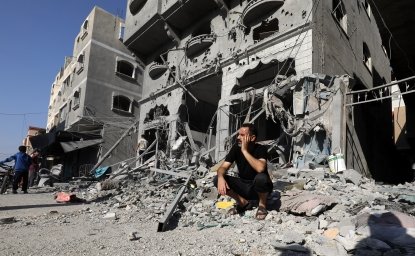
Israel Expands Operations on Multiple Fronts: Perspectives on the Conflict
